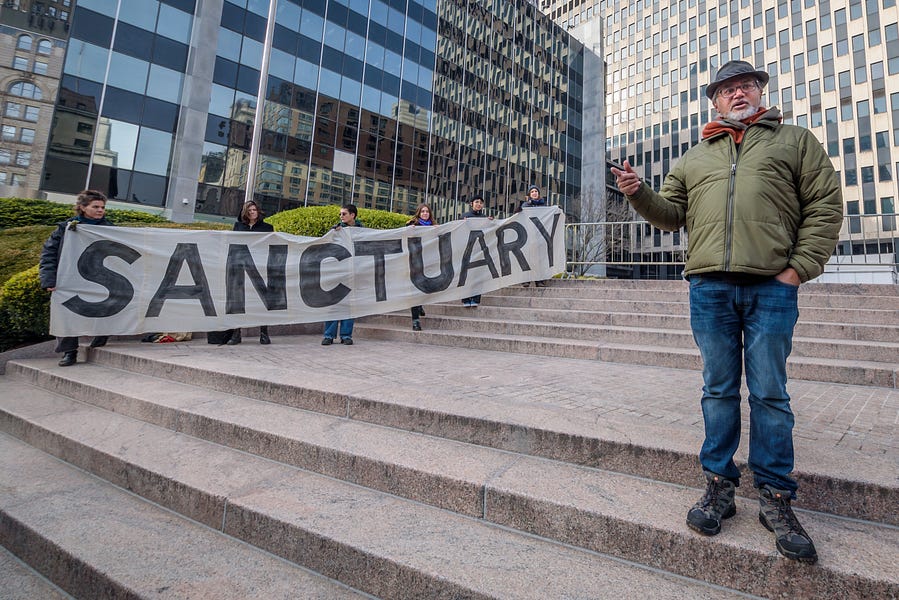Immigration and Customs Enforcement has announced plans to conduct large-scale arrests in three sanctuary jurisdictions in the upcoming weeks. This move signals a tough-on-immigration commitment to the president’s supporters right before the election. But not only is this push unlikely to make us any safer, it could do just the opposite—all while costing us a lot of money.
Unfortunately, history reveals a troubling pattern with who ICE arrests and removes from the country’s interior: They don’t focus on the most dangerous offenders.
Unauthorized immigrants with no criminal convictions make up 48 percent of all removals since 2003, by far the largest category. The second-largest category of removals—27 percent—includes less serious convictions, like illegal entry and traffic offenses. That means that 75 percent of ICE removals in the last 17 years have been of individuals convicted of either no crime, or of a less serious one.
Meanwhile, 19 percent of removals are for the most serious criminal conviction category. Yet even this category includes non-violent crimes, like fraud and selling drugs. Taking out the most numerous nonviolent offenses leaves about 10 percent of ICE removals for violent crimes.
This isn’t a new trend. According to this data, in no one year since 2003 did the number of criminal offenders in one category top the number of immigrants with no criminal convictions.
So what’s going on here?
First, many of those in the “no conviction” category have charges pending against them. ICE claims only 11 percent of arrestees had no convictions or charges in 2017. That is encouraging, if true. But it would still mean that between 11,000 and 30,000 people with a clean record were inadvertently targeted for arrest and deportation every year.
And this doesn’t lessen the above concern that most removals are for minor infractions, even among those with criminal records. This leads to the second possible explanation: There simply aren’t that many undocumented immigrants who have committed serious, violent crimes.
Nonetheless, the administration seems hellbent on punishing jurisdictions unwilling to commit to cracking down on so-called violent immigrants. These so-called “sanctuary” jurisdictions are defined as cities, counties, and states that limit the use of law enforcement resources to assist ICE in carrying out federal immigration responsibilities.
These policies have long been a favorite target of the Trump administration. But the pro-immigrant/anti-immigrant narrative is overly simplistic: Many jurisdictions choose not to sign agreements with ICE for several reasons that have nothing to do with enforcing our immigration laws.
State and local governments shoulder most costs associated with cooperative immigration enforcement agreements, known as 287(g) agreements. Local taxpayers are responsible for travel, housing, and per diems for officers during their ICE training, and associated salaries and overtime.
The costs are substantial. The 287(g) agreement in Gwinnett County, Georgia, cost taxpayers an average $3.7 million per year, amounting to 5 percent of the total sheriff’s budget. Denver’s now-defunct 287(g) program cost taxpayers $1.5 million, roughly equal to the cost of its entire family violence unit. Between 2007 and 2008, Arizona’s Maricopa County sheriff’s office ran up a $1.3 million budget deficit solely due to overtime associated with their 287(g) agreement.
Cooperating with ICE to detain alleged immigration offenders is also risky. ICE detainers are requests to hold individuals beyond their otherwise lawful incarceration time in a local jail or prison. One report found that the average length of stay for people released from the Los Angeles County Jail to ICE custody was 32.3 days, compared to 11.7 days for all other individuals. At $113 per prisoner per day, it costs taxpayers an average of $2,328 to hold one individual for ICE. In Gwinnett County, honoring federal detainers cost Georgia’s local governments an estimated $88 million over the past decade.
Local jurisdictions are also legally liable if the arrestee is unlawfully held beyond 48 hours–for instance, if the detainer is mistakenly placed on a citizen. Maricopa County, Arizona, was ordered to pay $43 million in litigation fees due to lawsuits directly related to its 287(g) program.
Finally, many local departments choose not to participate in immigration enforcement because it complicates their primary job—keeping communities safe. In areas with large immigrant populations, conflating local police with federal immigration authorities makes people less likely to report crimes and cooperate with investigations. For many law enforcement departments, maintaining the trust of their community is more important than carrying out a federal responsibility.
A growing empirical literature suggests that illegal immigrants are less crime-prone than natives and explain why jurisdictions are hesitant to supplement ICE efforts. The juice simply isn’t worth the squeeze. Therefore, arresting hundreds of thousands of low-level immigration violators might activate the base just before election day, but it’s hardly a smart return on investment.
Jonathan Haggerty is a resident fellow in Criminal Justice and Civil Liberties Policy at the R Street Institute. Follow him on Twitter @JHaggrid. Kristie De Peña is vice president of Policy and director of Immigration at the Niskanen Center. Follow her @kdpindc.
Photograph by Erik McGregor/LightRocket via Getty Images.






Please note that we at The Dispatch hold ourselves, our work, and our commenters to a higher standard than other places on the internet. We welcome comments that foster genuine debate or discussion—including comments critical of us or our work—but responses that include ad hominem attacks on fellow Dispatch members or are intended to stoke fear and anger may be moderated.
With your membership, you only have the ability to comment on The Morning Dispatch articles. Consider upgrading to join the conversation everywhere.